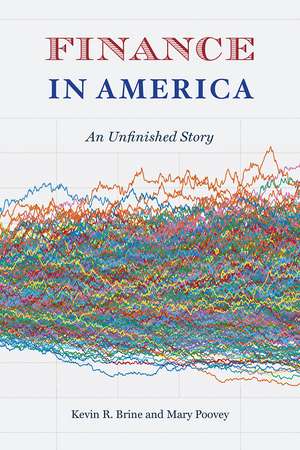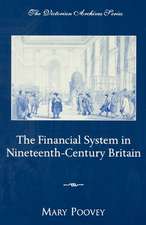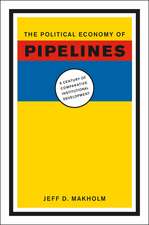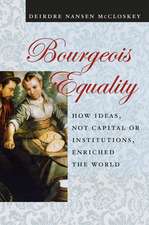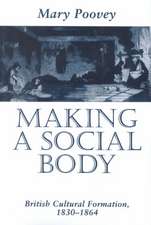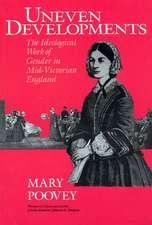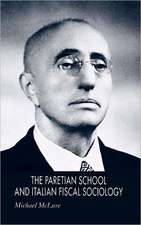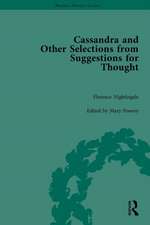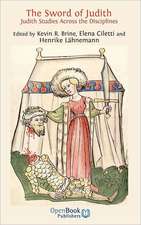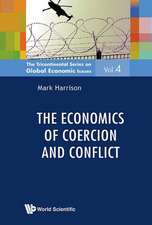Finance in America: An Unfinished Story
Autor Kevin R. Brine, Mary Pooveyen Limba Engleză Paperback – 2018
The economic crisis of 2008 led to an unprecedented focus on the world of high finance—and revealed it to be far more arcane and influential than most people could ever have imagined. Any hope of avoiding future crises, it’s clear, rest on understanding finance itself.
To understand finance, however, we have to learn its history, and this book fills that need. Kevin R. Brine, an industry veteran, and Mary Poovey, an acclaimed historian, show that finance as we know it today emerged gradually in the late nineteenth century and only coalesced after World War II, becoming ever more complicated—and ever more central to the American economy. The authors explain the models, regulations, and institutions at the heart of modern finance and uncover the complex and sometimes surprising origins of its critical features, such as corporate accounting standards, the Federal Reserve System, risk management practices, and American Keynesian and New Classic monetary economics. This book sees finance through its highs and lows, from pre-Depression to post-Recession, exploring the myriad ways in which the practices of finance and the realities of the economy influenced one another through the years.
A masterwork of collaboration, Finance in America lays bare the theories and practices that constitute finance, opening up the discussion of its role and risks to a broad range of scholars and citizens.
To understand finance, however, we have to learn its history, and this book fills that need. Kevin R. Brine, an industry veteran, and Mary Poovey, an acclaimed historian, show that finance as we know it today emerged gradually in the late nineteenth century and only coalesced after World War II, becoming ever more complicated—and ever more central to the American economy. The authors explain the models, regulations, and institutions at the heart of modern finance and uncover the complex and sometimes surprising origins of its critical features, such as corporate accounting standards, the Federal Reserve System, risk management practices, and American Keynesian and New Classic monetary economics. This book sees finance through its highs and lows, from pre-Depression to post-Recession, exploring the myriad ways in which the practices of finance and the realities of the economy influenced one another through the years.
A masterwork of collaboration, Finance in America lays bare the theories and practices that constitute finance, opening up the discussion of its role and risks to a broad range of scholars and citizens.
Preț: 310.67 lei
Nou
Puncte Express: 466
Preț estimativ în valută:
59.45€ • 61.72$ • 49.57£
59.45€ • 61.72$ • 49.57£
Carte tipărită la comandă
Livrare economică 25 martie-08 aprilie
Preluare comenzi: 021 569.72.76
Specificații
ISBN-13: 9780226502182
ISBN-10: 022650218X
Pagini: 528
Ilustrații: 1 halftone, 2 line drawings
Dimensiuni: 152 x 229 x 23 mm
Greutate: 0.59 kg
Ediția:1
Editura: University of Chicago Press
Colecția University of Chicago Press
ISBN-10: 022650218X
Pagini: 528
Ilustrații: 1 halftone, 2 line drawings
Dimensiuni: 152 x 229 x 23 mm
Greutate: 0.59 kg
Ediția:1
Editura: University of Chicago Press
Colecția University of Chicago Press
Notă biografică
Kevin R. Brine is an author, artist, and private investor. A Wall Street veteran, Brine spent over two decades as a board member and senior executive of a prominent investment management and research company and subsequently served on the board of a New York Stock Exchange insurance company. Mary Poovey has recently retired from her position as Samuel Rudin University Professor in the Humanities at New York University. She is the author of numerous books, including A History of the Modern Fact: Problems of Knowledge in the Sciences of Wealth and Society and Genres of the Credit Economy: Mediating Value in Eighteenth- and Nineteenth-Century Britain.
Cuprins
Introduction
I.1 The Story
I.2 What’s in a Name? Our Interpretive Position
I.3 The Archive
I.4 Our Readers and Why This Matters
1 Early Twentieth-Century Origins of American Finance: The Rise of the American Corporation and the Creation of the Federal Reserve System
1.1 Valuing the New US Corporations
1.2 The Growth of American Public Accounting
1.3 Early Twentieth-Century Banking and the Federal Reserve System
1.4 The Principles of American Banking
2 Early Twentieth-Century American Economic and Financial Theory
2.1 The Institutionalism of Thorstein Veblen
2.2 Late Nineteenth-Century American Neoclassical Price Theory and the Real US Economy
2.3 Early American General Equilibrium Theory
2.4 An Early Model of Expectations: The Fisher Effect
2.5 The Financial View
2.6 The Quantity Theory and the Banking View of Money
2.7 Frank Knight’s Theory of Uncertainty
2.8 American Public Finance: The Personal Income Tax
3 Statistics in America and the Governance of the Modern State
3.1 The Statistical Theory of Demand
3.2 The Harvard Business School Case Method
3.3 State Data Collection
3.4 Index Construction and the Dissemination of Data
3.5 The Challenges of Early Statistical Compilations
3.6 The Dispute over Index Numbers
3.7 The Harvard Barometer Project
3.8 The Pujo Investigation and the “Money Trust”
4 American Finance in the Interwar Period
4.1 Transformations in the Interwar Period
4.2 “New Era Talk” and the Speculative Mania of the 1920s
4.3 Investment Trusts and the Crash of 1929
4.4 The New Deal for the American People: Mortgages for All
4.5 Public Disclosure and the Modern Corporation
4.6 Security Research
4.7 The Dividend Discount Model
5 US Finance: Equity and Fixed Income Market Research 1920–1940
5.1 Midwest Agronomists and the Fortuitous Conjunction
5.2 Stock Market Skepticism and Sample Theory
5.3 Stock Forecasting
5.4 US Common Stock Indexes and Fixed Income Duration
6 Measuring and Taxing the US Economy in the Interwar Period
6.1 The Keynesian Revolution
6.2 Compiling US National Income and Production Aggregates
6.3 The Brookings Institution and the Expenditure Approach
6.4 Input-Output Accounting for the US Economy
6.5 Interwar American Fiscal Policy
7 Models of Economies and Finance, 1930–1940
7.1 “Little Model Worlds” and the Econometric Society
7.2 John Maynard Keynes, John R. Hicks, and Mathematical Economics
7.3 The IS-LM Model
7.4 Modeling the Financial View: Marschak’s “Theory of Assets”
7.5 The Keynes-Tinbergen Debate
7.6 A Macroeconometric Model of the US Economy
8 Postwar Economics in America, 1944–1970
8.1 Postwar Mathematical Economics and Econometrics
8.1a The Mathematical Foundations of American Keynesianism
8.1b The Econometrics of the Probability Approach
8.1c Mathematical Probability Theory
8.1d Game Theory and Bayesian Probability
8.1e Linear Programming of Activities
8.2. Measurement, Monetarism, Keynesian Stabilization Policies, and Growth Theory
8.2a Measuring Financial Flows
8.2b Financial Intermediaries
8.2c The First Theoretical Account of Financial Intermediation
8.2d Monetarism
8.2e The Fed on Trial
8.2f The Celler-Kefauver Act
8.2g From Institutionalism to Keynesianism in US Monetary and Fiscal Policy, 1950–68
8.2h Neoclassical Growth Theory
9 Modern Finance
9.1 Origins of Modern Portfolio Theory
9.1a Hedging
9.1b Correlation Analysis and Diversification
9.1c Subjective Probability Theory
9.1d Linear Programming and Finance
9.1e Competitive Equilibrium Theory
9.2 The Years of High Theory
9.2a The Capital Asset Pricing Model
9.2b The Mathematics of Random Processes
9.2c The Canonization of Modern Finance
9.3 Options Pricing Theory, Financial Engineering, and Financial Econometrics
9.3a The Theoretical and Mathematical Pillars of Modern Finance
9.3b Arbitrage Theory
9.3c The Options Pricing Model
9.3d Options Pricing in Continuous Time
9.3e Three Approaches to Pricing Derivatives
9.3f The Arbitrage Theory of Capital Asset Pricing Model
9.3g A Manual for Financial Engineers
9.3h Financial Econometrics
9.3i Efficient Capital Markets II
9.3j Behavioral Finance
10 The Transformation of American Finance
10.1 The Inter-Crisis Period: The Volcker Deflation to the Lehman Bankruptcy, 1982–2008
10.2 Early Signs of the Transformation
10.3 Macroeconomic Theories during the Inter-Crisis Period
10.3a New Classical Macroeconomic Theory, Dynamic Stochastic General Equilibrium Models, and Real Business Cycle Theory
10.3b Developments in Information Technology, New Keynesian Macroeconomics, the New Neoclassical Synthesis, and Hyman Minsky
10.3c New Research Initiatives
10.4 The Transition to a Market-Based Financial System
10.4a Deregulation and the Growth of Finance in America after 1980
10.4b Securitization and the Shadow Banking System
10.4c Structured Investment Vehicles
10.4d Credit Derivatives
10.5 The Market-Based Financial System in Trouble
10.6 Final Thoughts
Notes
Bibliography
Index
I.1 The Story
I.2 What’s in a Name? Our Interpretive Position
I.3 The Archive
I.4 Our Readers and Why This Matters
1 Early Twentieth-Century Origins of American Finance: The Rise of the American Corporation and the Creation of the Federal Reserve System
1.1 Valuing the New US Corporations
1.2 The Growth of American Public Accounting
1.3 Early Twentieth-Century Banking and the Federal Reserve System
1.4 The Principles of American Banking
2 Early Twentieth-Century American Economic and Financial Theory
2.1 The Institutionalism of Thorstein Veblen
2.2 Late Nineteenth-Century American Neoclassical Price Theory and the Real US Economy
2.3 Early American General Equilibrium Theory
2.4 An Early Model of Expectations: The Fisher Effect
2.5 The Financial View
2.6 The Quantity Theory and the Banking View of Money
2.7 Frank Knight’s Theory of Uncertainty
2.8 American Public Finance: The Personal Income Tax
3 Statistics in America and the Governance of the Modern State
3.1 The Statistical Theory of Demand
3.2 The Harvard Business School Case Method
3.3 State Data Collection
3.4 Index Construction and the Dissemination of Data
3.5 The Challenges of Early Statistical Compilations
3.6 The Dispute over Index Numbers
3.7 The Harvard Barometer Project
3.8 The Pujo Investigation and the “Money Trust”
4 American Finance in the Interwar Period
4.1 Transformations in the Interwar Period
4.2 “New Era Talk” and the Speculative Mania of the 1920s
4.3 Investment Trusts and the Crash of 1929
4.4 The New Deal for the American People: Mortgages for All
4.5 Public Disclosure and the Modern Corporation
4.6 Security Research
4.7 The Dividend Discount Model
5 US Finance: Equity and Fixed Income Market Research 1920–1940
5.1 Midwest Agronomists and the Fortuitous Conjunction
5.2 Stock Market Skepticism and Sample Theory
5.3 Stock Forecasting
5.4 US Common Stock Indexes and Fixed Income Duration
6 Measuring and Taxing the US Economy in the Interwar Period
6.1 The Keynesian Revolution
6.2 Compiling US National Income and Production Aggregates
6.3 The Brookings Institution and the Expenditure Approach
6.4 Input-Output Accounting for the US Economy
6.5 Interwar American Fiscal Policy
7 Models of Economies and Finance, 1930–1940
7.1 “Little Model Worlds” and the Econometric Society
7.2 John Maynard Keynes, John R. Hicks, and Mathematical Economics
7.3 The IS-LM Model
7.4 Modeling the Financial View: Marschak’s “Theory of Assets”
7.5 The Keynes-Tinbergen Debate
7.6 A Macroeconometric Model of the US Economy
8 Postwar Economics in America, 1944–1970
8.1 Postwar Mathematical Economics and Econometrics
8.1a The Mathematical Foundations of American Keynesianism
8.1b The Econometrics of the Probability Approach
8.1c Mathematical Probability Theory
8.1d Game Theory and Bayesian Probability
8.1e Linear Programming of Activities
8.2. Measurement, Monetarism, Keynesian Stabilization Policies, and Growth Theory
8.2a Measuring Financial Flows
8.2b Financial Intermediaries
8.2c The First Theoretical Account of Financial Intermediation
8.2d Monetarism
8.2e The Fed on Trial
8.2f The Celler-Kefauver Act
8.2g From Institutionalism to Keynesianism in US Monetary and Fiscal Policy, 1950–68
8.2h Neoclassical Growth Theory
9 Modern Finance
9.1 Origins of Modern Portfolio Theory
9.1a Hedging
9.1b Correlation Analysis and Diversification
9.1c Subjective Probability Theory
9.1d Linear Programming and Finance
9.1e Competitive Equilibrium Theory
9.2 The Years of High Theory
9.2a The Capital Asset Pricing Model
9.2b The Mathematics of Random Processes
9.2c The Canonization of Modern Finance
9.3 Options Pricing Theory, Financial Engineering, and Financial Econometrics
9.3a The Theoretical and Mathematical Pillars of Modern Finance
9.3b Arbitrage Theory
9.3c The Options Pricing Model
9.3d Options Pricing in Continuous Time
9.3e Three Approaches to Pricing Derivatives
9.3f The Arbitrage Theory of Capital Asset Pricing Model
9.3g A Manual for Financial Engineers
9.3h Financial Econometrics
9.3i Efficient Capital Markets II
9.3j Behavioral Finance
10 The Transformation of American Finance
10.1 The Inter-Crisis Period: The Volcker Deflation to the Lehman Bankruptcy, 1982–2008
10.2 Early Signs of the Transformation
10.3 Macroeconomic Theories during the Inter-Crisis Period
10.3a New Classical Macroeconomic Theory, Dynamic Stochastic General Equilibrium Models, and Real Business Cycle Theory
10.3b Developments in Information Technology, New Keynesian Macroeconomics, the New Neoclassical Synthesis, and Hyman Minsky
10.3c New Research Initiatives
10.4 The Transition to a Market-Based Financial System
10.4a Deregulation and the Growth of Finance in America after 1980
10.4b Securitization and the Shadow Banking System
10.4c Structured Investment Vehicles
10.4d Credit Derivatives
10.5 The Market-Based Financial System in Trouble
10.6 Final Thoughts
Notes
Bibliography
Index
Recenzii
"A truly magisterial history of the American financial system. Finance in America will be the textbook for a generation or more, for those wishing to understand what has become one of America’s most prominent economic sectors."
“An altogether remarkable scholarly achievement. In Finance in America: An Unfinished Story, Kevin Brine and Mary Poovey embed the development of economic and financial theory in the United States in its historical and institutional context. Further, they illuminate the interdependent relationship of the ‘real’ and the ‘financial’ sides of the economy. This is of profound importance and represents a welcome commitment to the intellectual bridge-building so needed between the domains of economic and financial theorizing. Essential reading for anyone with a stake in the ongoing story of American finance.”
“Few issues are more important than whether and how economies and their financial systems are rendered visible. All readers with a serious interest in that issue will benefit from Brine and Poovey’s remarkably comprehensive history.”
"The authors of this book are respectively a non-academic Wall Street practitioner and a non-economist academic, but the text is nonetheless of considerable interest to economists and in particular to historians of economics . . . the overall effect is to make clear how economics and finance, presented in modern textbooks as a matter of the logical workings of a closed mathematical model, in fact arose not only in bits and pieces but more importantly in concrete practice."
